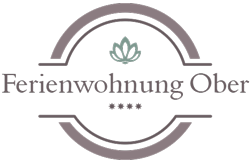What Is Tbt Agreement
What Is A Lease Surrender Agreement
15. April 2021Which Of The Following Provisions Is Included In A Mandatory Arbitration Agreement
16. April 2021What Is Tbt Agreement
The scope of the OBT is the material scope (what measures to take), the personal scope (to which the measures apply) and the scope of the measures over time. In accordance with Article 1, this agreement applies to all industrial and agricultural products, with the exception of services, sanitary and plant health measures (as defined in the agreement on the application of sanitary and plant health measures) and „purchase specifications established by public authorities for production or consumption needs“ (Article 1.4). [2] Although the OBT agreement applies to a wide range of industrial and agricultural products, sanitary and plant health measures and procurement specifications are covered by separate agreements. The rules of the OBT agreement help distinguish between legitimate standards and technical rules and protectionist measures. Standards, technical rules and compliance assessment procedures must be developed and applied on a non-discriminatory basis, developed and applied in a transparent manner and, where appropriate, based on relevant international standards and guidelines. Communication of members on demonstrations and mutual recognition agreements under the OBT agreement. 5.2.7 When a product`s specifications are changed after it has been determined to comply with applicable technical rules or standards, the process for assessing the compliance of the modified product is limited to what is necessary to determine whether there is sufficient confidence in the product`s compliance with the relevant technical requirements or standards; The CTA ensures that technical regulations, standards, testing and certification procedures do not create unnecessary trade barriers. The agreement prohibits technical requirements that are created to restrict trade, contrary to technical requirements created for legitimate purposes, such as consumer or environmental protection. [1] Its objective is to avoid unnecessary barriers to international trade and to recognize all WTO members in order to protect legitimate interests on the basis of their regulatory autonomy, although they encourage the application of international standards. The list of legitimate interests that may justify a trade restriction is not exhaustive and covers the protection of the environment, health and safety of people and animals. [1] The free trade agreements concluded by the United States also contain a chapter containing provisions on technical barriers to trade that must be respected in order to seek preferential treatment under the agreement. These chapters can be accessed through free trade agreements.
10.7 When a member has reached an agreement with another country or country on issues related to technical regulations, standards or compliance assessment procedures that could have a significant impact on trade, at least one member of the agreement informs the other members, through the secretariat, of the food products covered by the agreement and a brief description of the agreement. Concerned members are invited to consult with other members on request to conclude similar agreements or to organize their participation in these agreements. 6.3 Members are encouraged to be willing, at the request of other members, to enter into negotiations for mutual recognition agreements on the results of mutual compliance assessment procedures. Members may require these agreements to meet the criteria set out in paragraph 1 and to satisfy each other`s opportunities to facilitate trade in the products concerned. 3. Citizens of the parties to the dispute cannot be heard by a group of technical experts without the common agreement of the parties to the dispute, unless the panel considers that the need for scientific expertise cannot be met by other means.
